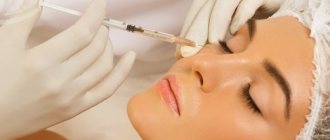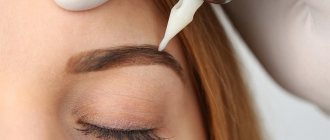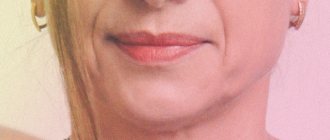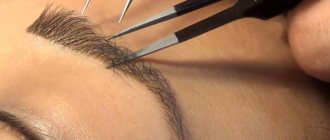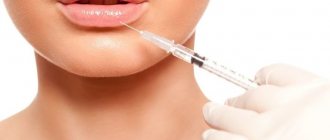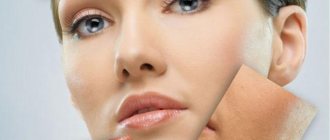Tears are an effective means of psycho-emotional release invented by nature. Most often associated with a state of sadness or sadness, although they can also be caused by joyful emotions. But whatever the reason, crying in most cases ends with swelling of the face and reddened eyes. What to do and how to get rid of such defects?
In this article
- Urgent measures
- Fighting puffy eyes at home
- Before bedtime
- ethnoscience
- First aid from the first aid kit
- Massage and exercise
- How to avoid tears
Urgent measures
The ability to cry with tears is acquired by a person in the first weeks of life. Crying is a baby’s signal to the outside world. Then, as an adult, it becomes a way of expressing emotions.
Crying is based on the mechanism of intense contraction of the lacrimal glands. This process interferes with the normal outflow of interstitial fluid. The situation is aggravated by the presence of salt in tears, which interferes with the release of water. The result is redness of the eyes, facial skin and swelling of the eyelids.
How to relieve swelling after crying? The first thing you can do right away is simply wash your face with cold water. It is advisable to remove makeup and thoroughly rinse each eyelid. Then you should wet a cloth or cotton pad with cold water and apply it to the swollen eyelid. Periodically, the material placed on the eyelid should be re-wetted. There are also recommendations to use a metal spoon instead of a cloth, placed temporarily in the freezer of the refrigerator. A similar use of ice cubes is also allowed. The procedure can last from 20 minutes to half an hour.
Tips to prevent puffy eyes after crying
When a person stops crying, it is recommended that he:
- immediately rinse your face with cold water;
- carry out a contrast wash (warm and cold water);
- ventilate the room well or take a walk in the fresh air.
To avoid swelling of the eyes after crying, it is recommended to adhere to a number of measures:
| Recommendation | Explanation |
| Don't rub your eyes while crying | The eyes may swell even more, this can also increase redness and even cause the development of an infectious-inflammatory process. |
| Don't hang your head down when crying | This will increase swelling |
| Blot tears immediately (but do not rub your face with the tissue) | Otherwise, it may cause skin irritation |
You can remove excess fluid from the body and reduce swelling with drinks that have a diuretic effect, which include:
- milk with added honey;
- lingonberry compote;
- green tea with lemon;
- infusion of rose hips.
Fighting puffy eyes at home
If you had to cry in the evening and have the opportunity to put yourself in order until the morning, a variety of remedies will come in handy, including traditional medicine.
So, how to fix the problem? First you need to calm down and stop rubbing your eyelids, irritated by tears. The eyelids will swell after crying. There is no need to refuse dinner, but this evening it is better not to eat over-salted food, so that bags under the eyes are not added to swollen eyelids in the morning. In addition to this, avoid drinking too much at night: you can restore the body’s water-salt balance the next day, when your face is already in order.
Ice
ice compress
If we take into account the fact that swelling of the eyelids is accompanied by an increase in blood vessels, then it is necessary to relieve their increased tone. Cold, for example ice, is suitable for this. You can wrap it in cloth so as not to freeze the epidermis and apply it to the eyelids for 10-15 minutes every 30 minutes, giving the eyes some time to rest from the cold and restore blood flow.
Before bedtime
If your face is swollen from crying, you should take a contrast shower 3 hours before bedtime. Do this procedure correctly so that blood flow to the skin improves and the body becomes toned. You can also perform a contrast wash.
It is recommended to go to bed no earlier than 2 hours after the outburst of emotions. It is advisable to maintain a semi-sitting position during the night; several pillows will help you with this. It is better to wake up 1-2 hours before usual time. After getting up, it is recommended to walk and not go back to bed.
Diuretics
Diuretics and herbs
If swelling appears after crying and it is severe, then you can use a diuretic. For these purposes, you can drink chamomile decoction, lingonberry leaf decoction or coffee. There are also medications, for example, Eufillin, Amiloride and Triamterene. But ObaGlazaRu pays special attention to the fact that using this method can be hazardous to health, so you must first consult a doctor.
ethnoscience
It is important to understand: if allergic reactions occur when using various remedies, including folk remedies, and the swelling can be removed, it not only does not subside, but even increases, you must stop self-medicating and immediately consult a specialist.
Traditional medicine has its own recipes for solving this problem. As a rule, the reason for the steady interest in them is the availability of components and the simplicity of combinations. And we must not forget that the recipes have some effectiveness. This combination gives rise to the popularity of traditional medicine.
Cucumber is the most popular food to combat eyelid swelling. So, you need to take a well-chilled cucumber, peel it, grate it on a fine grater, wrap it in a cloth - and the natural compress is ready. There is a simpler option: cut into circles and put on the eyelid, renew after a while.
Potatoes - take a cooled medium-sized root vegetable and grate it finely. Then you should wrap it in a gauze napkin and place it on your eyelids for 20 minutes.
Chicken egg white - after separating the white, beat it, apply the resulting foam to the areas of the face around the eyes. The mask can be on the skin for up to 20 minutes; during this time it is better to avoid making movements with facial muscles. To wash off the mask, you need to soak it.
Tea - Brew unflavored loose leaf black tea. Collect cooled tea leaves in a gauze cloth, squeeze out the water and apply to reddened eyelids. Duration: about 20 minutes. Loose leaf tea can be replaced with tea bags.
A compress made from herbal infusion - its base will be brewed chamomile, calendula or mint. Cotton pads are soaked in the infusion and applied for 10 minutes. Chamomile can also be used as a diuretic to remove excess fluid from the body.
Ice is one of the most effective ways to combat swelling. The eyelids are wiped with ice from clean water or tea, while the ice cube itself is wrapped in soft cloth. Important: when wiping, you should take short breaks to avoid hypothermia.
Eye drops from the pharmacy remove reddened whites of the eyes
First, let’s figure out how the whites of the eyes turn red in general. This occurs due to the expansion of the vessels that supply the eye with blood. When we cry, our tear glands work overtime. And while the tears are flowing, you need to produce even more fluid. To do this, a certain signal is triggered in the brain - it dilates the blood vessels of the eyes so that more blood comes to them. And with it a new liquid will be added: blood consists of 55% plasma, and plasma is 90% water and 10% proteins!
The red whites of the eyes can be removed only by a product that targets the blood vessels. A group of such drugs are called decongestants, or vasoconstrictors. They can be bought at the pharmacy without a prescription and dropped into the eyes to narrow blood vessels and remove redness from the whites. It is also useful in case of a runny nose - decongestants constrict blood vessels and remove snot.
- Eye drops “Visin Classic”, 327 rubles - a representative of vasoconstrictors for relieving swelling and redness.
- Eye drops "VizOptic", 307 rubles - analogue of "Vizin". The active ingredient is the same, just a different manufacturer.
The drug is sold without a prescription, but be careful - vasoconstrictors have contraindications. They can be viewed in the Vidal online medicine directory. For example, if you have high blood pressure, angle-closure glaucoma or diabetes, then you cannot use these drops. Consult your doctor before purchasing drops if you see your diagnosis in the instructions.
Massage and exercise
In the morning, after sleep, massage and gymnastics will help tidy up the area around the eyes. The massage activates the metabolism, and excess fluid itself begins to leave the soft tissue around the eyelid.
The massage movements are performed carefully, easily, without pressure or indentation, from the outer edge of the eye to the opposite side.
Basic complexes of gymnastics and massage:
- Tapping the area of swelling with your fingertips. Runs for 10 minutes.
- Circular eye movements in one direction and the other for 30 seconds.
- Intense eye turns up and down and left and right. 10 times in each direction.
- Alternating frequent blinking with squinting. Performed for 30 seconds and 3 times with breaks.
Medications
Medicines should be used to eliminate swelling of the eyelids only as prescribed by the attending physician, after examination, tests and clarification of the diagnosis. Here are the main groups of drugs that are used to eliminate swelling:
- Antibiotics. Used for established bacterial infections. As a rule, antibacterial agents are prescribed for local use: Tetracycline ointment, Gentamicin or Erythromycin.
- Diuretics. Prescribed for decreased kidney function, sometimes for allergic edema. They use drugs in tablet form: Lasix, Furosemide.
- Antiviral drugs. Prescribed for established viral infections of the mucous membrane of the eyes: conjunctivitis, ophthalmic herpes. The most commonly used ointments are Virolex and Bonafton.
It is no secret that vasoconstrictor ointments aimed at eliminating bruises help relieve swelling from the eyes. They have anti-inflammatory, anti-edematous, thrombolytic abilities. They also contain cooling elements, which has a positive effect on severe swelling.
Thanks to the convenient formula and selected components, the effect of the product occurs in a couple of minutes. The result also lasts a long time – up to 12 hours. The anti-edema remedy must be purchased only at a pharmacy and used according to the instructions.
Creams and gel are not applied to the dermis. Some components may cause irritation; do not use the product on the mucous membrane, otherwise irritation will occur, tears will flow, and the appearance will be spoiled. If everything is done correctly, the cosmetic defect will quickly disappear.
How to avoid tears
Sometimes life circumstances develop in such a way that it is impossible to cry; it is necessary to restrain emotions. In this case, there are several secrets that will help relieve nervous excitement and, most likely, prevent tears.
First, you should pay attention to your breathing. Try to give it a measured pace by taking a series of deep breaths through your nose, followed by a slow exhalation through your mouth. Then we move on to the source of tears - the eyes: you need to blink quickly while you have the opportunity. After this, wash your face and drink cold water. Go to the mirror, look at yourself and smile, even if it is very difficult. Physical activity won't hurt.
If this doesn’t work, we begin to switch our attention by force of will. First, we are mentally distracted by a random foreign object or sound. If you can't, pinch yourself or bite your lip, but don't do it too hard. The last resort is a loud cry (after which, in most cases, relief is felt).
What can cause angioedema around the eyes?
In 4/5 cases, angioedema is caused by foreign substances. The most common allergens are medications (hormonal drugs, anesthetics, antibiotics, blood products), animal poisons, cosmetics, food and pollen allergens. Among food products, allergic reactions most often occur to egg whites, nuts, honey, fish, citrus fruits, and chocolate. Other provoking factors may include:
- cold;
- strong pain;
- viral infections;
- pregnancy;
- injuries.
Quincke's edema can be hereditary or acquired. If the disease is caused by genetic abnormalities, it can manifest itself from early childhood. Acquired pathology, on the contrary, most often manifests itself in old age and is provoked by concomitant diseases. For example, in 30% of cases, the cause of angioedema is ACE inhibitors, which are prescribed for the treatment of cardiovascular diseases.


